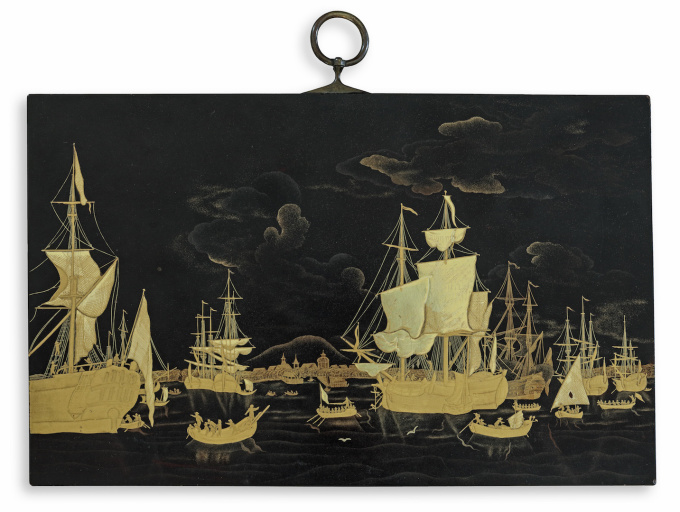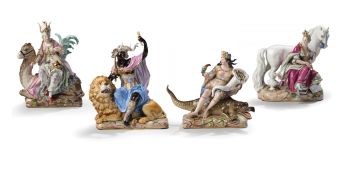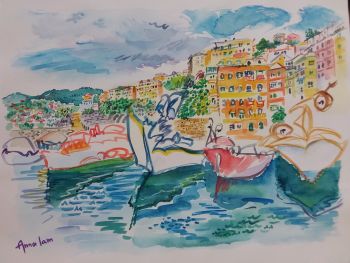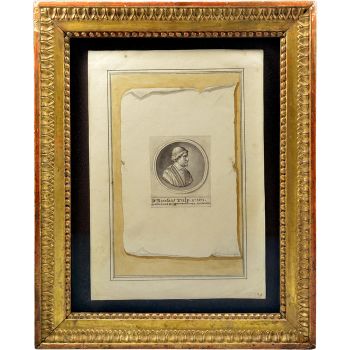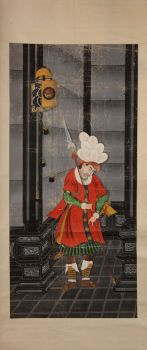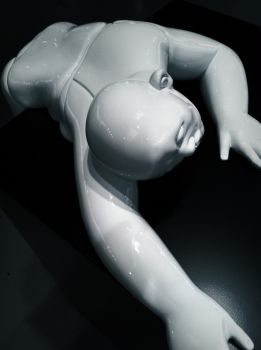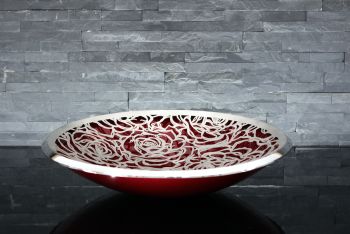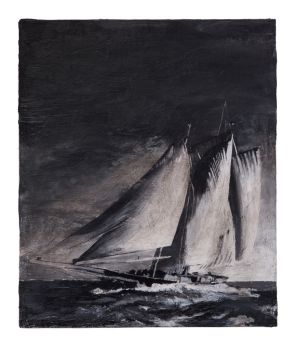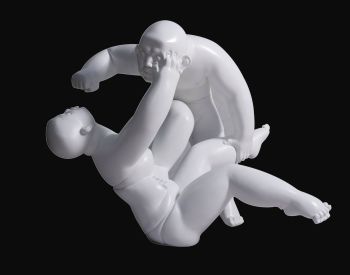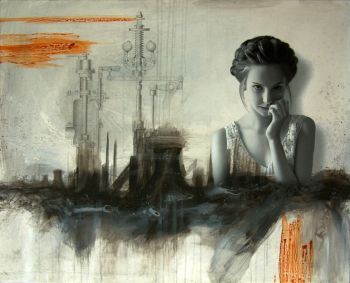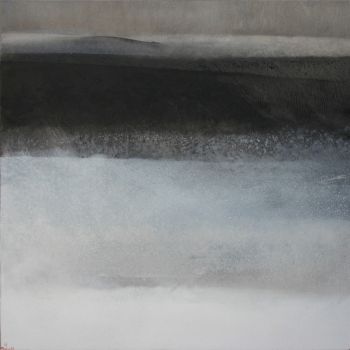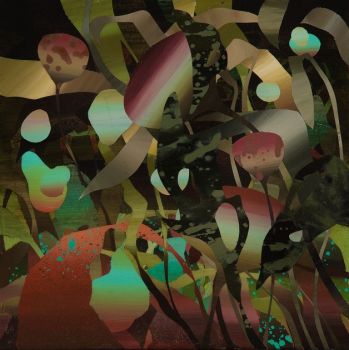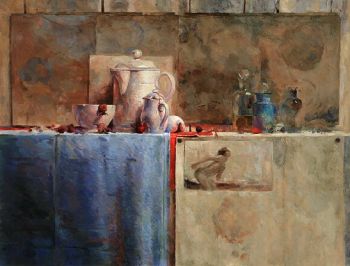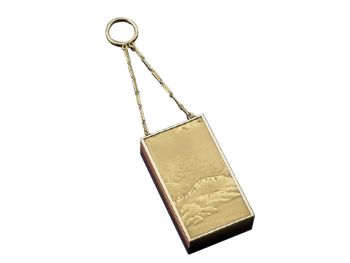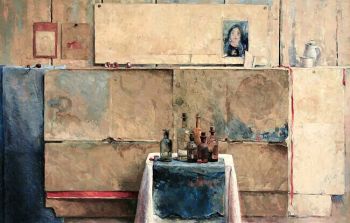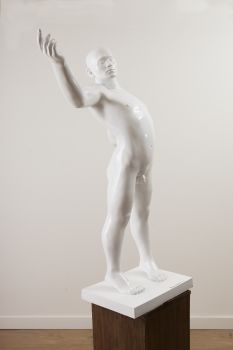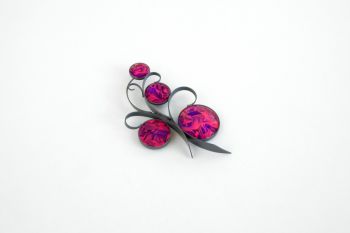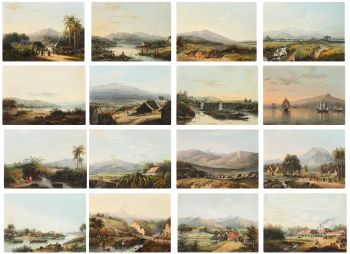UNA TARGA IN LACCA GIAPPONESE RAFFIGURANTE IL RASSEGNO DI BATAVIA DI 'LAKWERKER SASAYA' 1780 - 1820
Artista Sconosciuto
Lacca
Attualmente non disponibile tramite Gallerease
Zebregs & Röell - Fine Art - Antiques
- A proposito di opere d'arte
By “LAKWERKER SASAYA” (act. circa 1780-1820), Nagasaki, Edo period circa 1800
At the reverse an inscription reading: De Reede van Batavia with the coat of arms of the town Batavia, a sword with a laurel wreath, amidst banners, cannons, nautical instruments and a Dutch lion holding a spear topped by a “liberty-cap”.
With a label at the reverse reading: “Tegen het eind van de 18e eeuw trad ene Van Reede op als gouverneur van de VOC te Decima. Hij liet een aantal plaquettes vervaardigen naar voorbeeld van uit Holland meegebrachte gravures” (towards the end of the 18th century Van Reede was head of the VOC at Decima. He ordered several plaques after Dutch prints he had taken to Nagasaki).
Black lacquer on copper, decorated and inscribed in gold and silver, hiramaki-e, togidashi and sparse mura-nashiji.
H. 17.5 x W. 28 cm
Note:
This scene with Dutch ships at anchor on the roadstead of Batavia was copied after an engraving by Mattias de Sallieth, after a drawing by Hendrik Kobell (1751-1799) and published in Batavia, de hoofdstad van Nederlands Oost-Indië, 1782-1783. In Uit Verre Streken June 2011, item 2, a Japanese lacquered writing box is illustrated with the same scene and also inscribed “DE REEDE VAN BATAVIA” (roadstead of Batavia), in an oval with the arms of Batavia underneath, after the same engraving based on a drawing by Hendrik Kobell, as was used for the present plaque. The interior of the box is fitted with compartments for writing implements and a glass inkwell, beneath a hinged cover inscribed “ LAKWERKER SASAYA”. So SASAYA certainly possessed the engraving of the roadstead of Batavia which was used for the present lacquer plaque, as well as for the writing box, suggesting that the present plaque is also by his hand. Sofar only four other pieces with Sasaya’s mark were known, a lacquer plaque depicting the sea battle on Doggersbank (Rijksmuseum Amsterdam, inv. NM 6309), a scene in ancient Rome (Rijksmuseum Amsterdam, inv. RBK 1960-29), both dated 1792, and a pair of secrétaires, one depicting the landing of British troops in Holland in 1799 (Rijksmuseum Amsterdam, inv, NG 401) and the other representing the sea- battle of Kamperduin of 1797 (Maritime Museum Prins Hendrik Rotterdam, inv. M 1913), both inscribed “LAKWERKER SASAYA” in an oval inside the lid.
Recently we found two very similar secrétaires both signed on the same place inside the lid LAKWERKER SASAYA, one inscribed on the front with the name “Olivia”. According to Oliver Impey & Christiaan Jörg, Japanese export lacquer 1580-1850, Amsterdam, 2005, p.53-57 and 266-267, the figure of Sasaya remains elusive. It is not clear from the existing records whether Sasaya was an individual lacquer worker, a representative of a workshop, a wholesaler or a merchant. Besides, the name Sasaya was not uncommon and appeared in the Dutch “Dagregisters” (journal) of Decima as early as 1776. - A proposito di opere artista
Può succedere che un artista o un creatore sia sconosciuto.
Alcune opere non sono determinate da chi sono state realizzate o sono state realizzate da (un gruppo di) artigiani. Esempi sono statue dell'antichità, mobili, specchi o firme non chiare o leggibili ma anche alcune opere non sono affatto firmate.
Inoltre puoi trovare la seguente descrizione:
•"Attribuito a …." A loro avviso probabilmente opera dell'artista, almeno in parte
•“Studio di ….” o “Officina di” A loro avviso un'opera eseguita nello studio o nella bottega dell'artista, eventualmente sotto la sua supervisione
•“Cerchio di…” A loro avviso un'opera del periodo dell'artista che mostra la sua influenza, strettamente legata all'artista ma non necessariamente al suo allievo
•"Stile di..." o "Seguace di..." A loro avviso un'opera eseguita nello stile dell'artista ma non necessariamente da un allievo; può essere contemporaneo o quasi contemporaneo
•“Modalità di…” A loro avviso un'opera nello stile dell'artista ma di epoca successiva
•"Dopo …." A loro avviso una copia (di qualsiasi data) di un'opera dell'artista
•“Firmato…”, “Datato…” o “Iscritto” A loro avviso l'opera è stata firmata/datata/inscritta dall'artista. L'aggiunta di un punto interrogativo indica un elemento di dubbio
•"Con firma....", "Con data...", "Con iscrizione..." o “Riporta firma/data/iscrizione” a loro avviso la firma/data/iscrizione è stata aggiunta da qualcuno diverso dall'artista
Sei interessato ad acquistare questa opera d'arte?
Artwork details
Related artworks
- 1 - 4 / 12
Artista Sconosciuto
COPPETTA CROGIOLO PICCOLA SAWASA GIAPPONESE 'FORMA PESCA'early 18th
Prezzo su richiestaZebregs & Röell - Fine Art - Antiques
Artista Sconosciuto
A rare Japanese export lacquer medical instrument box1650 - 1700
Prezzo su richiestaZebregs & Röell - Fine Art - Antiques
Artista Sconosciuto
UN NETSUKE MARINO IN AVORIO DI UN OLANDESE CHE TIENE UN FAN . CINESE18th century
Prezzo su richiestaZebregs & Röell - Fine Art - Antiques
Artista Sconosciuto
The Stamford Raffles Secretaires.1800 - 1813
Prezzo su richiestaZebregs & Röell - Fine Art - Antiques
Artista Sconosciuto
UN NETSUKE IN AVORIO DI UN OLANDESE CHE GIOCA CON UN RAGAZZINO18th century
Prezzo su richiestaZebregs & Röell - Fine Art - Antiques
Artista Sconosciuto
UN PICCOLO NETSUKE IN AVORIO DI UN OLANDESE CON UN TAMBURO1750 - 1800
Prezzo su richiestaZebregs & Röell - Fine Art - Antiques
Artista Sconosciuto
UN RARO GRANDE TELESCOPIO GIAPPONESE IN PELLE LACCATA1750 - 1800
Prezzo su richiestaZebregs & Röell - Fine Art - Antiques
Artista Sconosciuto
UN NETSUKE IN AVORIO DI UN OLANDESE CHE TIENE UN GALLETTO18th century
Prezzo su richiestaZebregs & Röell - Fine Art - Antiques
1 - 4 / 20Artista Sconosciuto
COPPIA DI TORCHÈRE O PORTACANDELE IN TEAK INDONESI LACCATI E DORATI18th century
Prezzo su richiestaZebregs & Röell - Fine Art - Antiques
Artista Sconosciuto
UN NETSUKE IN AVORIO DI UN OLANDESE CHE TIENE UN GALLETTO18th century
Prezzo su richiestaZebregs & Röell - Fine Art - Antiques
Artista Sconosciuto
UN NETSUKE IN AVORIO DI UN OLANDESE CHE GIOCA CON UN RAGAZZINO18th century
Prezzo su richiestaZebregs & Röell - Fine Art - Antiques
Artista Sconosciuto
UN CONTENITORE PER DOCUMENTI DELLO SRI LANKA IN ARGENTO DORATO19th century
Prezzo su richiestaZebregs & Röell - Fine Art - Antiques
Artista Sconosciuto
UN RARO SADELI INDIANO COMPLETO DI LAVORO E SCRITTURA INTARSIATI1800 - 1850
Prezzo su richiestaZebregs & Röell - Fine Art - Antiques
Artista Sconosciuto
The Stamford Raffles Secretaires.1800 - 1813
Prezzo su richiestaZebregs & Röell - Fine Art - Antiques
Artista Sconosciuto
UN PICCOLO NETSUKE IN AVORIO DI UN OLANDESE CON UN TAMBURO1750 - 1800
Prezzo su richiestaZebregs & Röell - Fine Art - Antiques
Artista Sconosciuto
UN RARO GRANDE TELESCOPIO GIAPPONESE IN PELLE LACCATA1750 - 1800
Prezzo su richiestaZebregs & Röell - Fine Art - Antiques
Johannes La (le) Blanck
Un set di ampolle d'argento olandese a doppio uso1786
Prezzo su richiestaJacob J. Roosjen SRI
1 - 4 / 24Artista Sconosciuto
UN NETSUKE IN AVORIO DI UN OLANDESE CHE GIOCA CON UN RAGAZZINO18th century
Prezzo su richiestaZebregs & Röell - Fine Art - Antiques
Artista Sconosciuto
Olandesi in miniatura18th century
Prezzo su richiestaZebregs & Röell - Fine Art - Antiques
Artista Sconosciuto
UN RARO SADELI INDIANO COMPLETO DI LAVORO E SCRITTURA INTARSIATI1800 - 1850
Prezzo su richiestaZebregs & Röell - Fine Art - Antiques
Artista Sconosciuto
Due ritratti di studio di Mas Marco Kartodikromo1900 - 1950
Prezzo su richiestaZebregs & Röell - Fine Art - Antiques
Shiba Kokan
Dipinto di un olandese di fantasiaearly 19th
Prezzo su richiestaZebregs & Röell - Fine Art - Antiques
Artista Sconosciuto
UN NETSUKE IN AVORIO DI UN OLANDESE CHE TIENE UN GALLETTO18th century
Prezzo su richiestaZebregs & Röell - Fine Art - Antiques
Artista Sconosciuto
Olandesi in miniatura (Netsuke)1700 - 1900
Prezzo su richiestaZebregs & Röell - Fine Art - Antiques
1 - 4 / 24Samuel Dejong
Anatomia Blue Heritage, Atlas Closed2017 - 2019
Prezzo su richiestaVilla del Arte Galleries
Artista Sconosciuto
The Stamford Raffles Secretaires.1800 - 1813
Prezzo su richiestaZebregs & Röell - Fine Art - Antiques
Samuel Dejong
Anatomia Blue Heritage, Hercules Open2017 - 2019
Prezzo su richiestaVilla del Arte Galleries
 A cura di
A cura diGallerease Magazine
1 - 4 / 24Artista Sconosciuto
A silver spoon commemorating Juff’ Margareta van Hoorn1656 - 1694
Prezzo su richiestaZebregs & Röell - Fine Art - Antiques
Abraham Salm
Twenty-four chromolithographs of Java after A. Salm”1801 - 1876
Prezzo su richiestaZebregs & Röell - Fine Art - Antiques
Artista Sconosciuto
A Surinam-themed Amsterdam long-case clock1746 - 1756
Prezzo su richiestaZebregs & Röell - Fine Art - Antiques
 A cura di
A cura diGallerease Magazine
Artista Sconosciuto
A rare Japanese export lacquer medical instrument box1650 - 1700
Prezzo su richiestaZebregs & Röell - Fine Art - Antiques
1 - 4 / 12

